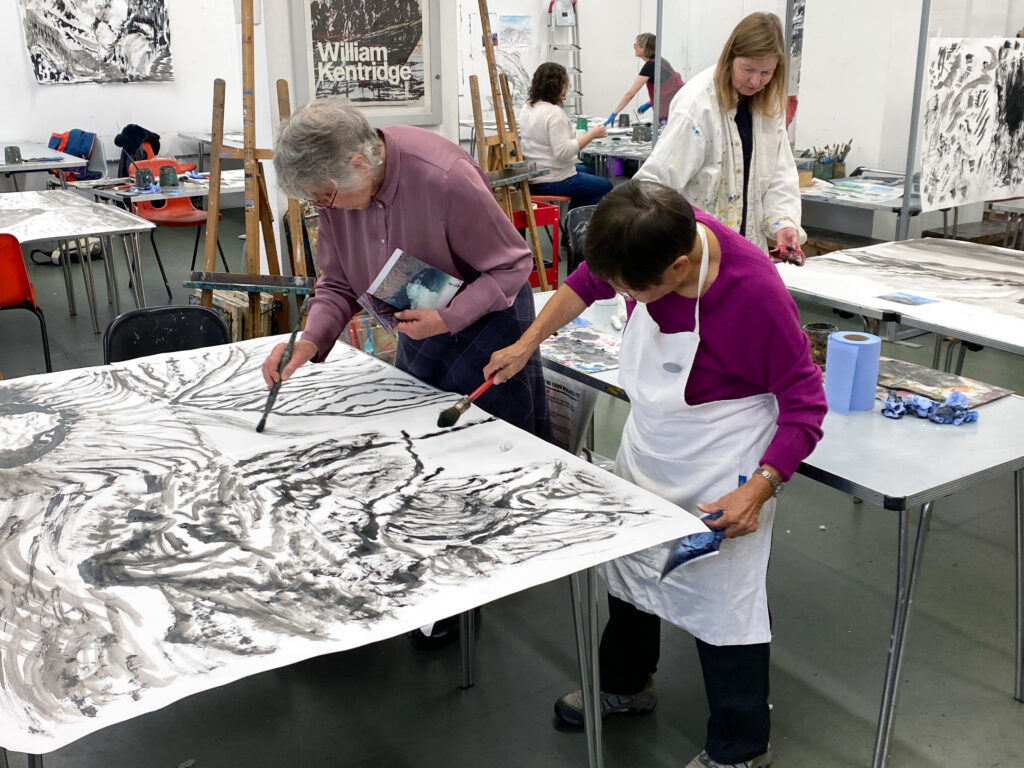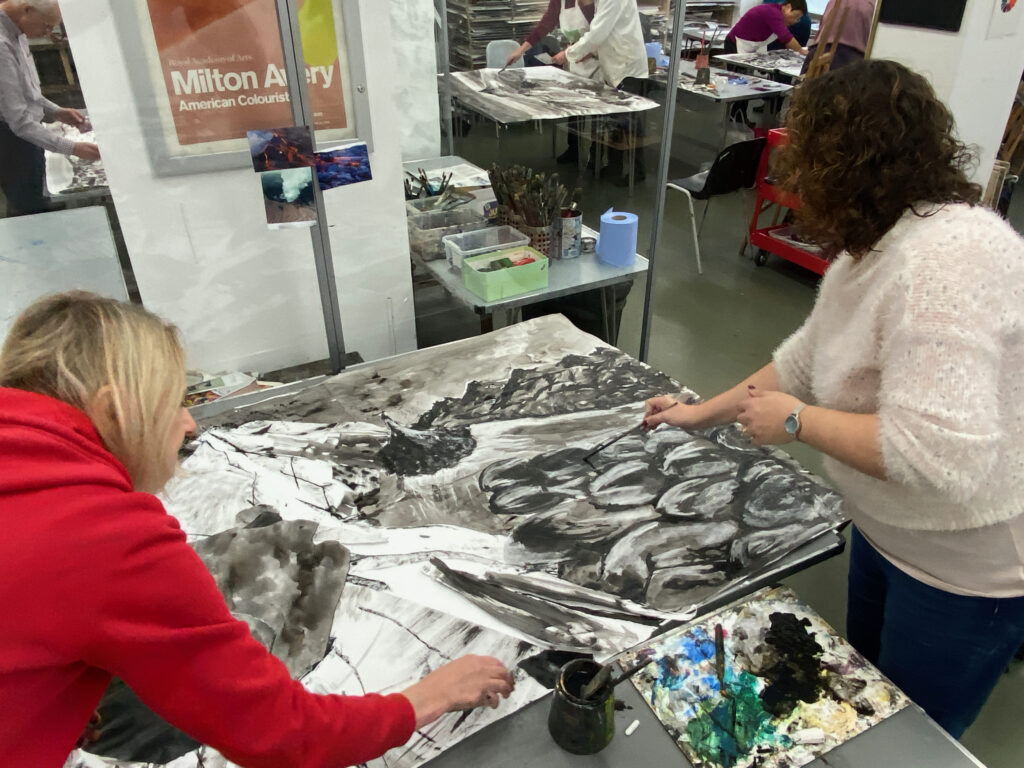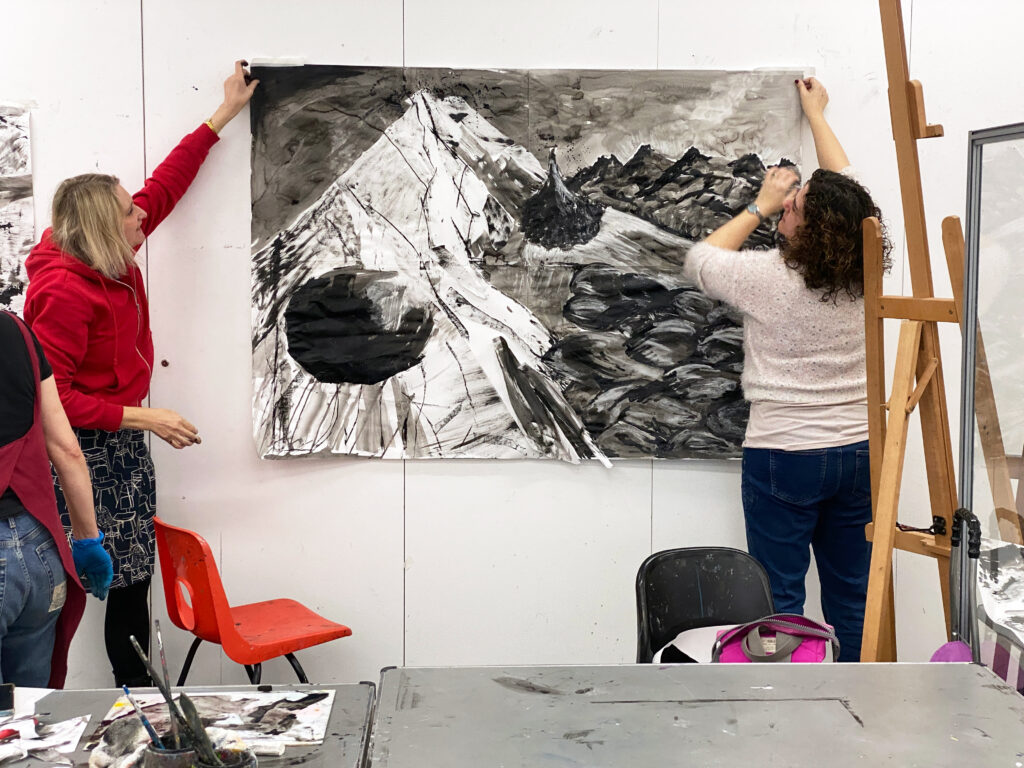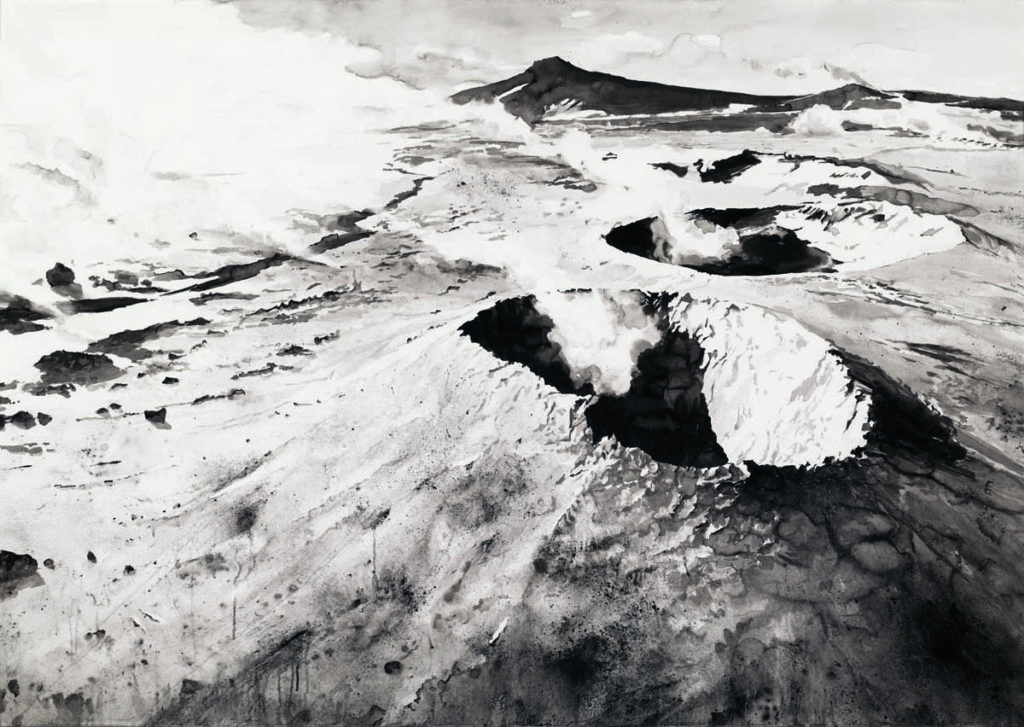
Emma Stibbon RA works primarily through drawing and printing, depicting environments that are undergoing transformation, including the polar regions, volcanoes, deserts, coastal and urban locations. Her approach to landscape is driven by a desire to understand how human activity and the forces of nature shape our surroundings. She does this through location based research, often working alongside geologists and scientists, and in the studio where information is transformed into large scale drawn and printed artworks.
“Many of the environments and landscapes I depict are changing rapidly. As an artist, I feel committed to representing the impact of these changes, be they natural or human. My impulse is to draw, in an effort to act as a witness,” she says.
Drawing is at the heart of Emma’s practice and she has travelled widely, recording her responses to the physical appearance and psychological impact of natural and built environments. Working from sketches and photographic records, Emma creates stark, monochrome, often large-scale works on paper. Romantic in character, they dramatise the effects of human intervention and natural phenomena on monumental structures and explore the fragility of existence.
In her ink and volcanic ash drawing Hverir, Iceland the mixture of ink and volcanic dust allows Stibbon to make marks that both represent the landscape and make us aware of their own physicality. At times the ink/ash mixture can be seen to run down the surface of the paper. The image selection is done in such a way that it could appear lunar. Only the wisps of steam coming from the volcanic craters confirm the scene is of earth.
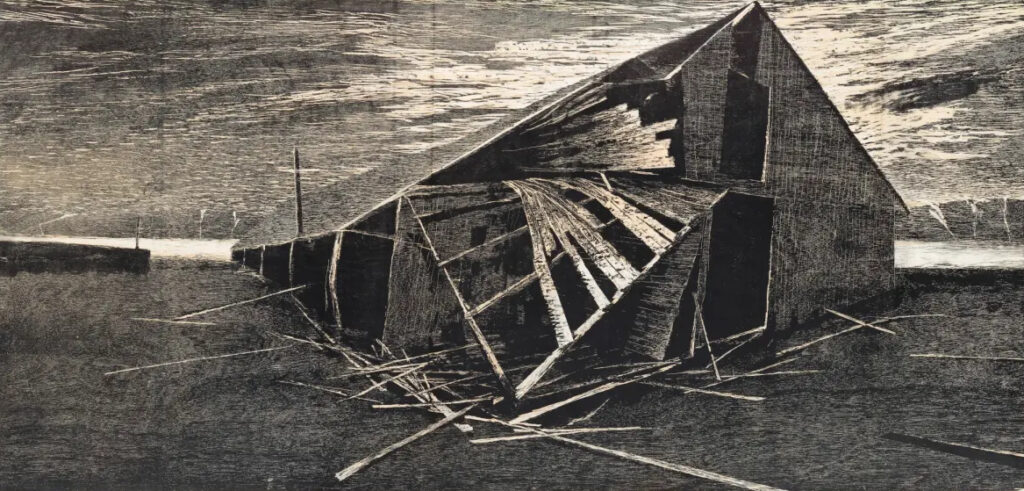
Her large woodcut print Collapsed Whaling Station, Deception Island, Antarctica of 2006 was shown in a small exhibition at the RA in 2023 and you can see her discuss this work, and her practice in general, here.
The print shown here is large at 117 x 238 cm, and cut using wood carving chisels from two sheets of plywood fitted together. The ink is then hand rolled on to the wood and the paper then placed on top and burnished from the back. She varies the weight of the burnishing to achieve different tonal values and by very carefully peeling the paper away, whilst still holding it in place so that it doesn’t slip, can work on re-inking and further burnishing in order to get very strong blacks. The grain of the wood can be used to good effect too, especially if you don’t over ink the areas of wood that you want to get good grain quality from. But similar techniques can be used equally well on a smaller scale.
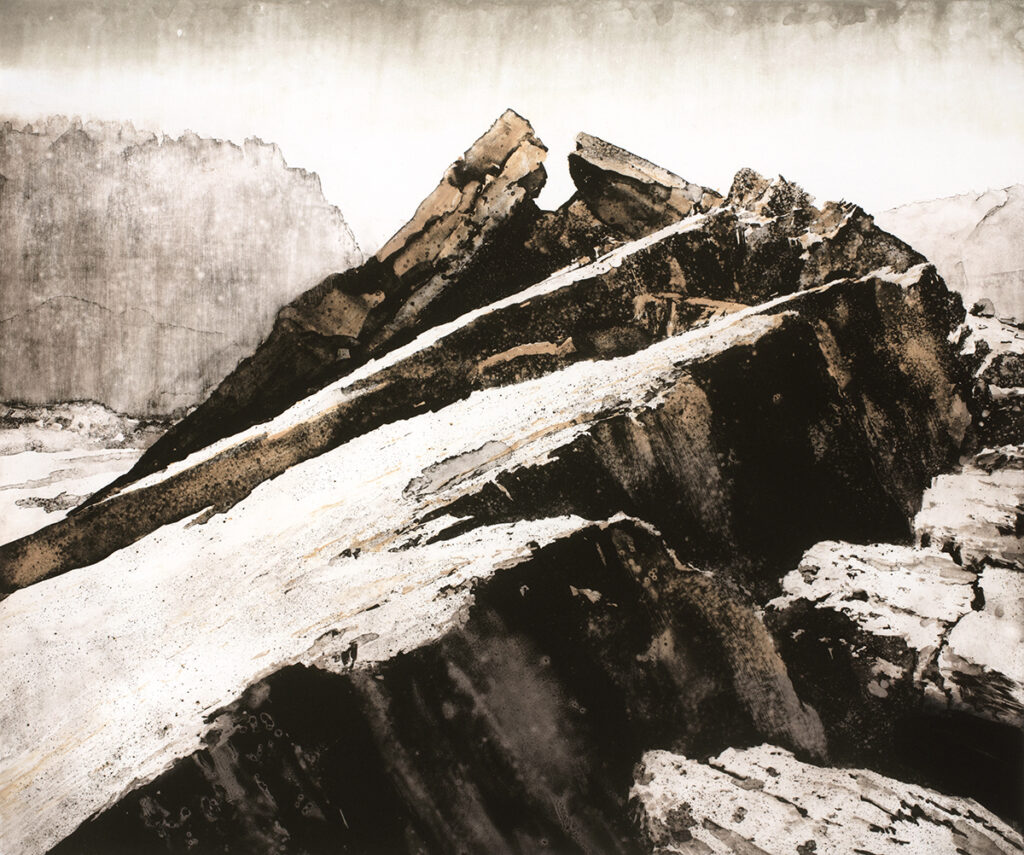
In her intaglio print above, Broken Terrain of 2017, Stibbon demonstrates that her influences include the northern European tradition of the sublime, romantic land and seascape. This tradition includes artists such as Caspar David Friedrich whose work The Sea of Ice is discussed here.
You can also learn about a dramatic, sublime alpine scene of Philip James de Loutherbourg here or watch landscape printer, Norman Ackroyd, talk about his fascinating work here and here.
Finally, Barbara Rae’s powerful, pared-down prints charting her arctic voyages are worth investigating here.
A lesson idea
